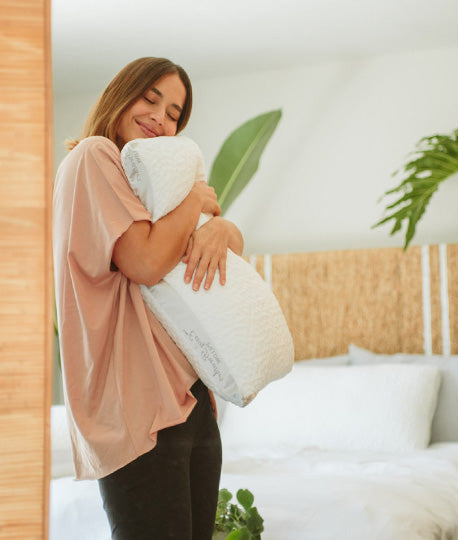Natural wool is a traditional fill, used in bedding throughout the ages.
-Wool resists bacteria.
-Wool is fire resistant.
-Wool is cool in the summer yet warm in the winter.
-Unlike bedding that uses plucked down feathers, a sheep grows a coat of wool annually and is not harmed during shearing.
-Wool surpasses synthetic fill in terms of quality and durability.
-Unlike down bedding which shifts over time (ie. bare spots in a comforter), wool stays in place.
-Wool is a sustainable product helping small farmers make a living.
-With proper care your woolen bedding can last for decades.
Allergy doctors agree that a true wool allergy is rare. However, persons who are “allergic to wool” will attest that they experience allergic reactions when they come in contact with wool.
Persons who have a wool allergy which try on a sweater for example state that the scratchy itch is so immediate and so miserable; they must take it off immediately!
Is experiencing the itch a wool allergy? Most allergy doctor believe that some people are more prone to experience irritation from wool, but that doesn’t always mean it is a true allergic response. However for people with atopic dermatitis or eczema, those same doctors will recommend the avoidance of wool, because of it’s irritating tendency.
What most people don't know is that not all wool is created equally. This day and age, it's rare to come in contact with natural or organic wool. Most wool we would come in contact with, such as a sweater or blanket, has been processed and treated. The normal process for treating and processing wool is as follows: The wool is sorted as to fineness, crimp, length of fiber, and felting qualities. Dirt, suint (dried perspiration), and lanolin are removed by a soap-alkali scouring; by the expensive naphtha solvent method, which retains the full strength and softness of the fiber; or by freezing and shaking. Wool may be carbonized to remove vegetable matter. It is bleached and dyed as raw stock, yarn, or in the piece; it is oiled to withstand processing and is often blended.
It's no wonder, with all the things the processed wool is subject to that people would get the impression they are allergic to wool. But as stated above, true wool allergies are rare. And in our natural and organic mattresses and beds, you never come in contact with the wool, so there should be no issue, unless you are Vegan, in which case we have options for those customers who wish no animal products to be used in their mattress or bed.
Why is wool great at regulating temperature?
To understand the properties of wool fabrics you must first understand the structure and properties of wool fibers. Unlike synthetics, which have a uniform composition inside and out (i.e. it’s a hunk of plastic that may be shaped), individual wool fibers have an exterior scaly sheath, enclosing bundles of interior fibers. The surface of each fiber is hydrophobic (repels moisture), helping to repel water off the surface of the fabric.
Because of the complex internal structure of wool fibers, and the fact that the interior portion of the fiber is hydrophilic (attracts moisture), water can be absorbed INTO the fibers of a wool fabric, whereas in synthetic fabrics water is only held in the spaces between individual fibers since the fibers themselves do not absorb water. Wool fibers can absorb approximately 30 percent of their weight in water. Synthetic fibers themselves will not absorb any water. This means that wool fabrics will hold more moisture than synthetics and will take longer to dry. But in a wool fabric the water is stored away from the surface, and consequently a wool garment may not feel so clammy next to your skin when wet. When combined as layers, the air flow around the fibers allows the moisture to evaporate, keeping you and your sleep environment dry, dust mite-free and comfortable, winter or summer. The perfect material for making an organic and natural mattress or bed, blanket or comforter.
When considering buying a mattress, I highly recommend choosing a natural or organic material. Mattresses made with or covered in natural materials breath better and don't pollute your indoor air quality. Living here in the San Francisco and Berkeley areas, heat is not a big issue, but in the Dublin/Walnut Creek and Concord areas, and the South Bay down into San Jose, and even Napa, it can get very hot, and in areas like this, customers will really appreciate the comfort of real, natural wool in their Nest Bedding mattress, bedding and blankets.





